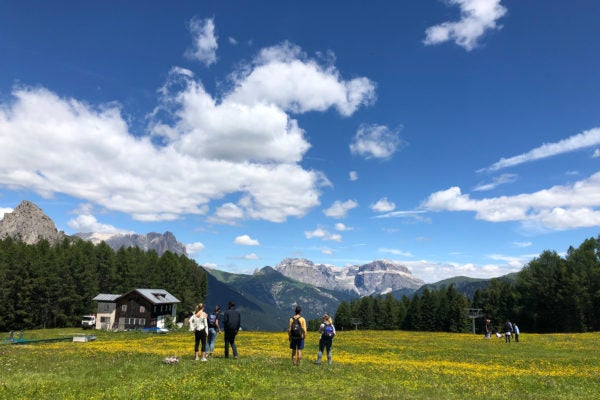
Undergrad student fights to protect and preserve languages before they’re forgotten
According to linguistics experts, one language goes extinct every two weeks, and with it, the culture, values and community that accompanied that unique flavor of communication.
Preserving an endangered language takes painstaking work, but Prim Phoolsombat, a junior majoring in computational linguistics at the USC Dornsife College of Letters, Arts and Sciences, is helping to do just that, aiming to create a computer program that could use language analysis to protect languages in danger of extinction.
During a summer research trip in 2018 led by Khalil Iskarous, associate professor of linguistics at USC Dornsife, Phoolsombat and a group of fellow USC students traveled to Europe to research Ladin, a language used by only a few hundred people in Italy’s Fassa Valley. The students recorded people reading and conversing in the language, with the goal of building a computer program that can analyze their audio data and create the outlines of Ladin’s basic rules, like how words and sentences are formed and what they sound like when spoken aloud.
“The ultimate goal is to create a software program that, given a certain amount of audio speech data, would be able to document a language by figuring out pretty much everything about it,” Phoolsombat said.
The ultimate, eternal record

Ladin is spoken by only a few hundred people, some of whom live in the Fassa Valley in Italy.
Experts say a fifth of humanity’s languages have fewer than 1,000 speakers. But to truly preserve these languages, linguists must interview native speakers, often with a translator, record thousands of words and their meanings, figure out sentence structures and document how the language is written, if at all. Because of this lengthy process, the fight to save many of the world’s languages is being lost. A computer model could help save critical time along the way.
“It doesn’t have to be perfect,” Phoolsombat said. “But if we can create a model that does this with relative success and we apply it to different endangered languages around the world, it will speed up the process greatly.”
But, while one can apply clinical and scientific methods to language preservation, a language is not simply a specimen to be analyzed and catalogued. Another component of protecting a language is fostering its use among people, within a culture and with the outside world. This year, Iskarous’ group developed a mobile app that features illustrated fairy tales and lullabies in Ladin. They plan to create video games to help young children and teens connect with their elders, gain interest in learning Ladin and preserve their lifestyle and traditions.
“The very nice thing about this work is that students are learning about mathematical and linguistics techniques that are very intricate, but they’re also helping preserve human culture,” Iskarous said. “These things have a real human dimension that is very profound.”
For Phoolsombat, the daughter of Thai-speaking immigrants who grew up speaking both English and Thai, the research is also grounded in personal experience.
“From an immigrant perspective, I see the value of language. It’s the ultimate anthropological record, and it lasts forever if you can document it,” she concluded.